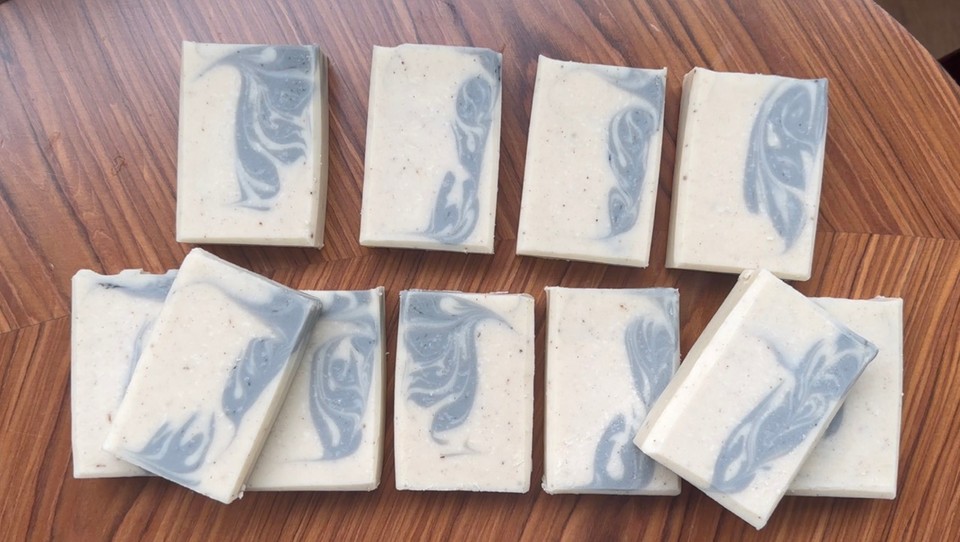Dead Sea Soap
You can help support my website and channel through the “buy me a coffee” page.
Here is the link: https://www.buymeacoffee.com/diycosmetica
Your support helps me keep sharing here more information and more formulas.
If you want to read more about the basics of soap making, please check out this post here.
I am a big fan of natural cold process soaps and often make them. If you are looking for more recipes for cold process soaps, I have recipes for oat soap bars, salt soap bars, lime and honey soap bars, solid dish soap bars and using soap scraps for soap design.
If you don't have access to dead sea clay, you can still make a similar soap, using this recipe, with green French clay instead of the dead sea clay.
Remember, you can always use your soap scraps to make this soap design from soap scraps or make the sugar scrub from soap scraps.
Dead Sea clay is full of good minerals like magnesium, calcium, potassium, and iron, which nourish the skin and make it look fresh and rejuvenated.
This clay is good at cleaning the skin deeply. It pulls out dirt, toxins, and impurities, which helps clear the skin and make it look clearer. When used in soap, Dead Sea clay's slightly rough texture helps gently scrub off dead skin cells, leading to smoother and healthier-looking skin.
Even though it's good at deep cleaning, Dead Sea clay doesn't remove the skin's natural oils. This is important for keeping the skin's natural protective barrier healthy. If you regularly use products with Dead Sea clay, you'll notice your skin feeling smoother and tighter, which is particularly good for skin that's starting to show signs of aging.
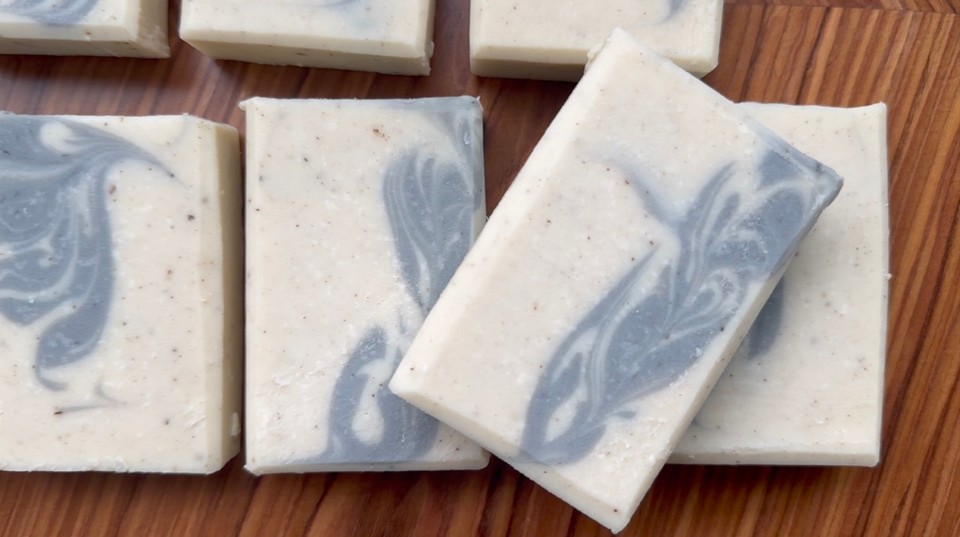
Dead Sea clay is gentle and works well for all kinds of skin, even sensitive. It's perfect for people with oily or acne-prone skin because it can soak up extra oil and help unclog pores.
Adding Dead sea clay to soap gives the soap a very "earthy" light green/gray color.
I mixed the Dead Sea clay powder with some distilled water before adding the clay to the oils. I used some of the total amount of water to mix the clay. I already calculated this in the recipe so you don't need to change the recipe.
I used a hanger to create a swirl. If you don't have a hanger, you can use a chopstick to make a swirl. I got my hanger here. In the video, I demonstrate how you can achieve a similar swirl using a chopstick.

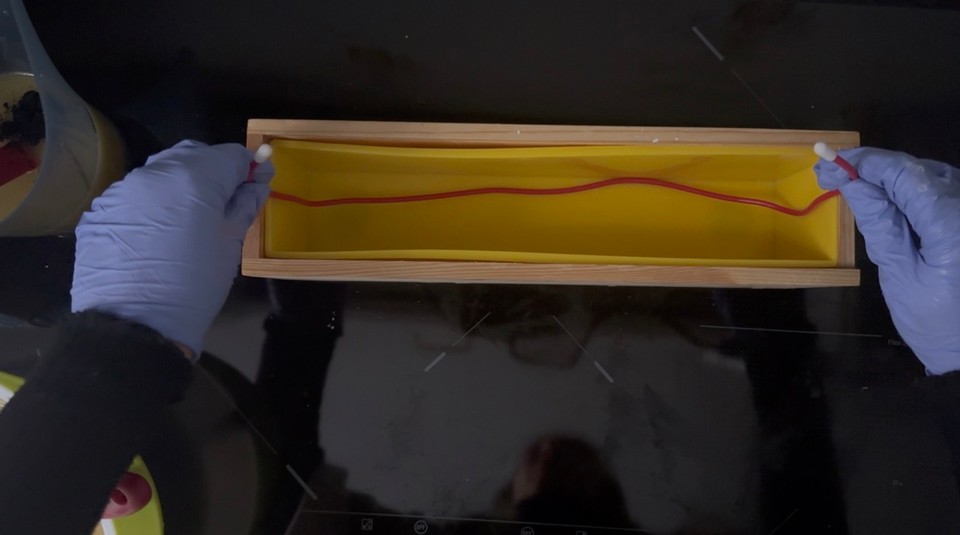
For extra color and extra detoxing benefits, I used activated charcoal powder. Activated charcoal is great at soaking up toxins and unwanted stuff from the skin.
When added to soap, it removes dirt, chemicals, and bacteria, making it an excellent cleaner. It's especially good for oily skin because it can soak up extra oil without drying the skin. This helps make the skin clearer and more balanced.
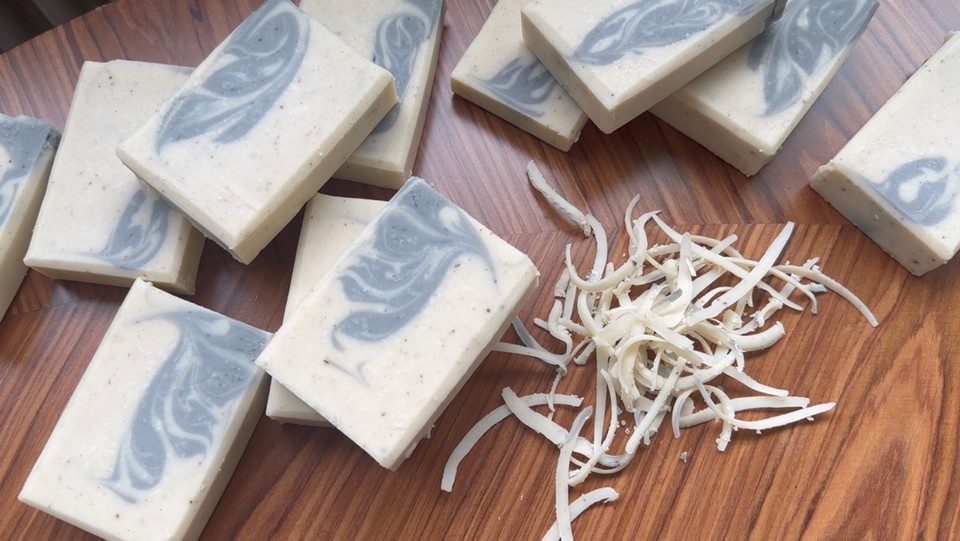
Even though it's smooth, activated charcoal in soap gently scrubs away dead skin cells. Plus, it's good at eliminating bad smells, so it's a helpful ingredient in soaps that fight body odor.
I added one tablespoon of cornstarch to this recipe for a smoother and silkier texture. I added the cornstarch to the oils before adding the lye solution. You can replace the cornstarch with arrowroot powder or white kaolin clay.
Since I am making a swirl in this soap, I don't want to reach more than a light trace when I emulsify the oils with the lye solution. When the soap batter is liquid, it is easier to create swirls, and the swirl has more movement.
I used 6% super fat, 33% coconut oil, and 33% lye concentration in this recipe.
I wrote two recipes, one for 1000g oil weight and another recipe for 1200g oil weight.
Ingredients for 1000 oil weigh:
- Distilled water 200g
- Sodium hydroxide (lye) 142g
- Coconut oil 330g
- Cocoa butter 120g
- Olive oil 300g
- Sunflower oil 200g
- Castor oil 50g
- 2 tbsp dead sea clay powder
- distilled water (to mix with the dead sea clay) 88g
- ½ tbs activated charcoal
***Optional: 2 tbsp cornstarch
***Optional: Essential oils blend 26g (10g lavender, 10g eucalyptus and 6g of peppermint).
Ingredients for 1200 oil weigh:
- Distilled water 280g
- Sodium hydroxide (lye) 170g
- Coconut oil 396g
- Cocoa butter 144g
- Olive oil 360g
- Sunflower oil 240g
- Castor oil 60g
- 2 tbsp dead sea clay powder
- distilled water (to mix with the dead sea clay) 66g
- ½ tbs activated charcoal
***Optional: 2 tbsp cornstarch
***Optional: Essential oils blend 28g (I used 11g lavender, 11g eucalyptus and 6g of peppermint).
Method:
- Pour the water into a heat-resistant container (remember to protect your hands and eyes before making the lye solution). Add the lye (sodium hydroxide) to the water (it will get hot very quickly). Stir the lye to dissolve in the water until the water is clear. It is recommended to add the lye to the water in a ventilated area (close to a window). Set aside to cool down.
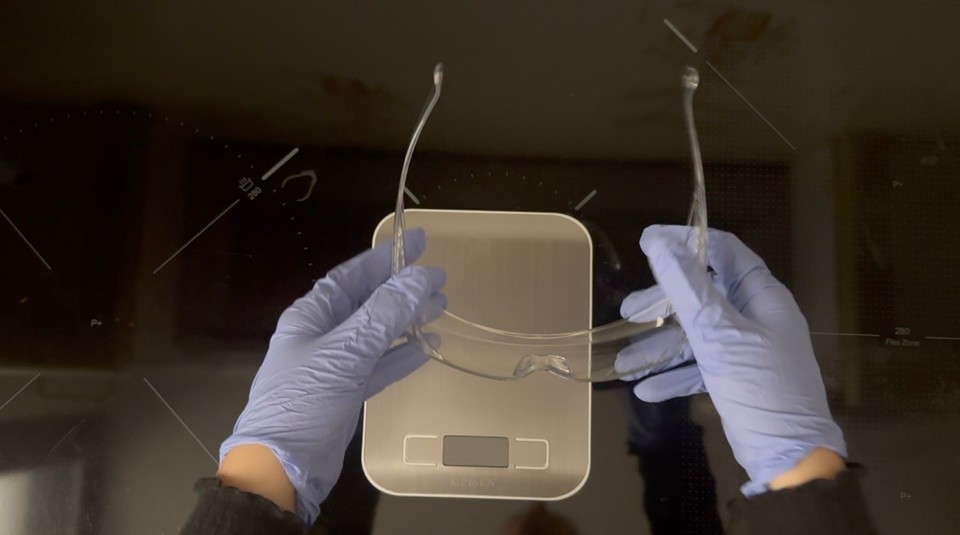
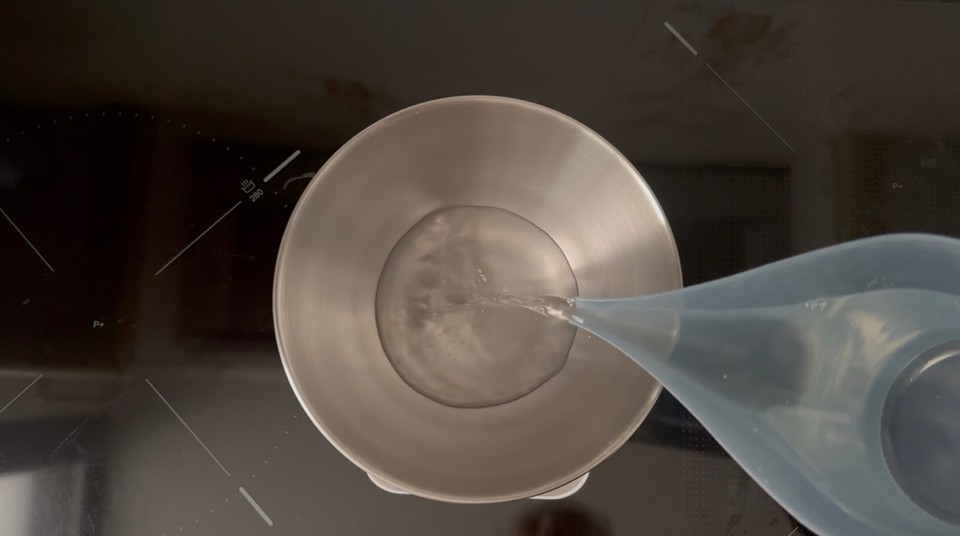
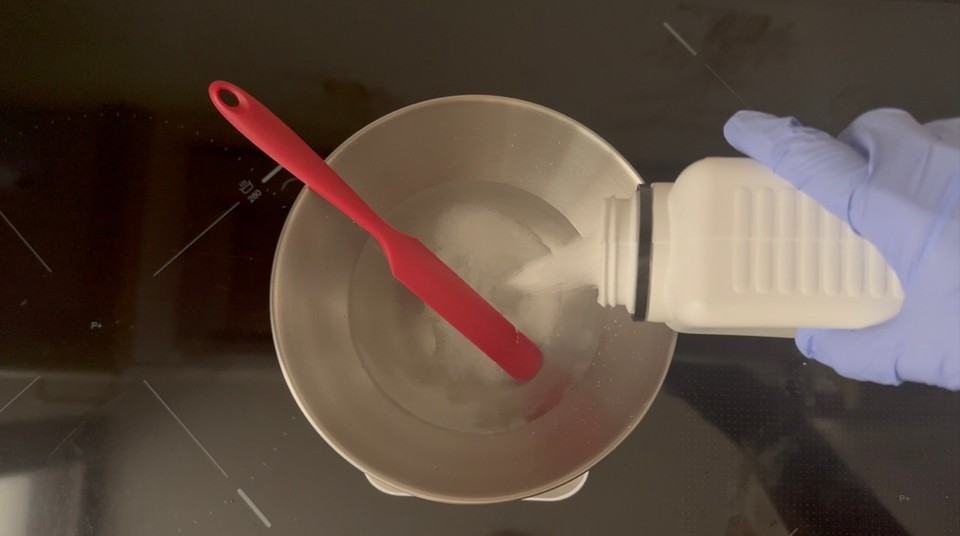
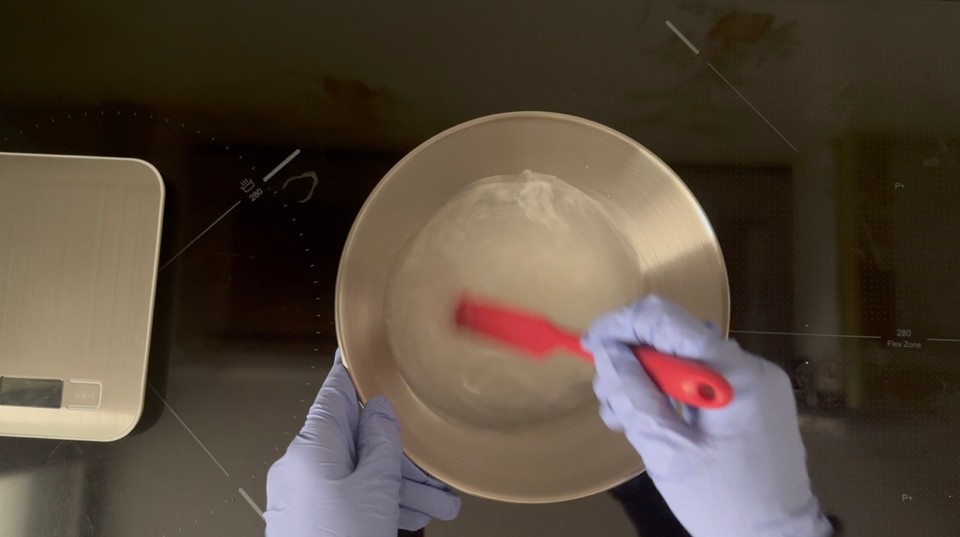
- Place the hard oils (such as coconut oil) and butter (cocoa butter) in a pan and melt them on low-medium heat.
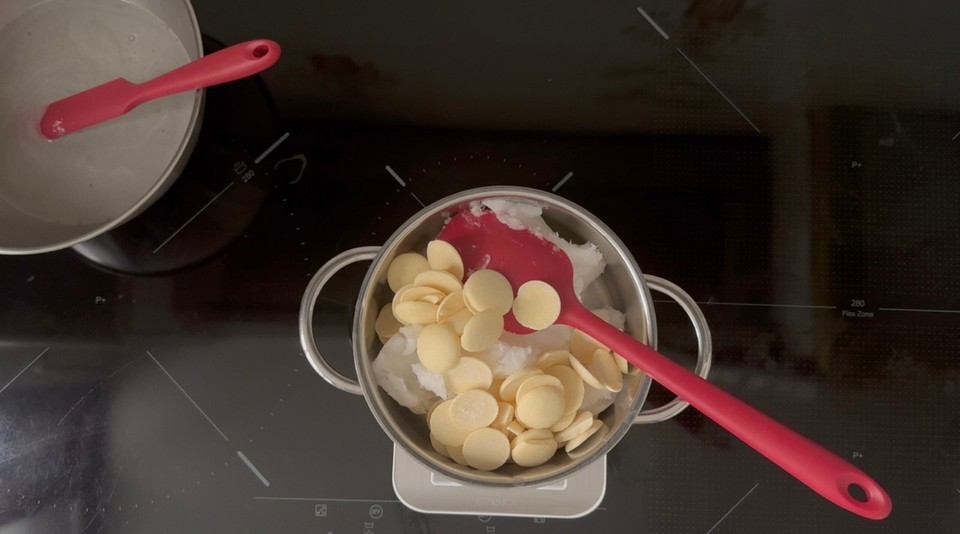
- While the hard oil and butter are melting, Prepare the dead sea clay powder, mix it with the water and set aside.
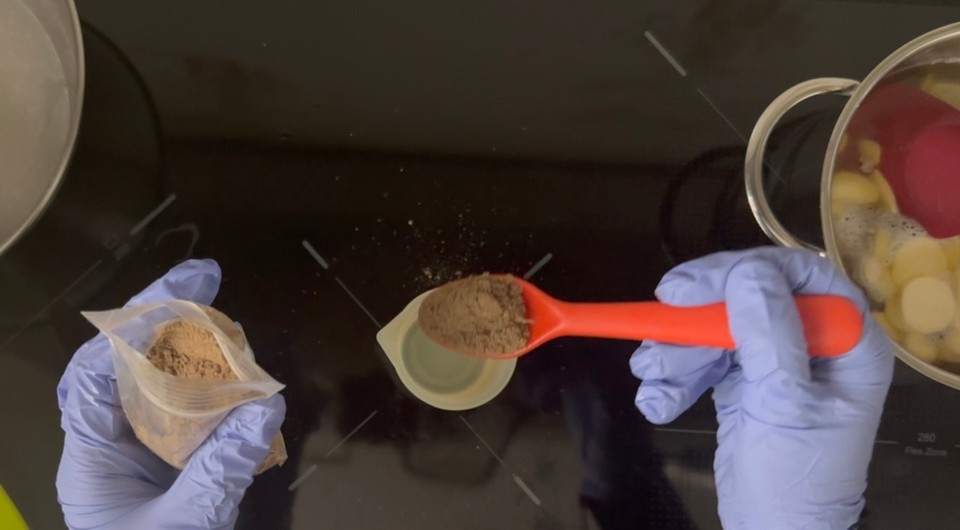

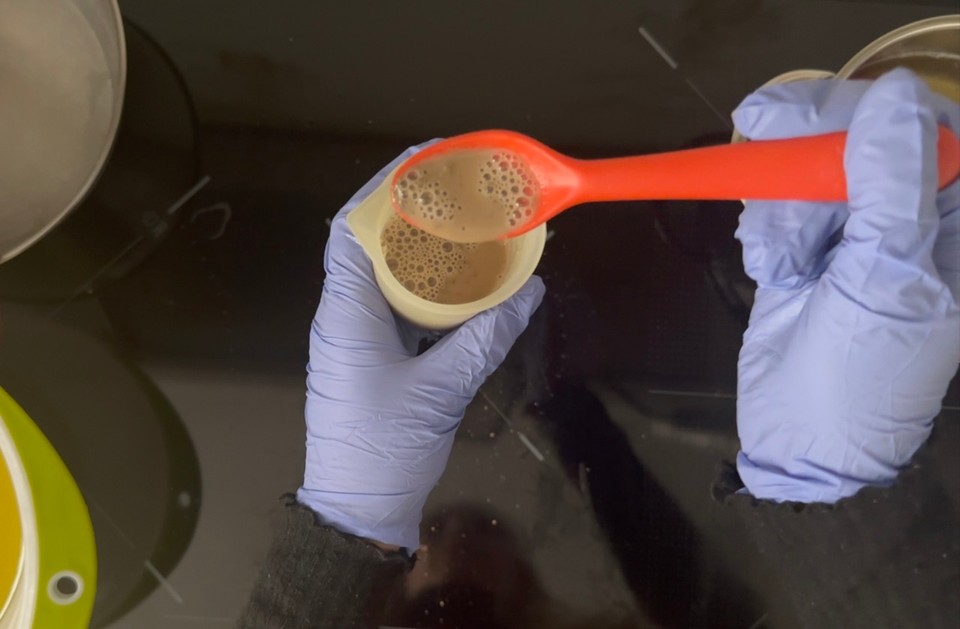
- Add the liquid oils in a separate container. Coconut oil can be liquid in warm temperatures, so you can add it here if it's liquid. If you live in a cold area, your coconut oil is probably solid, and you will need to melt it with the butter.
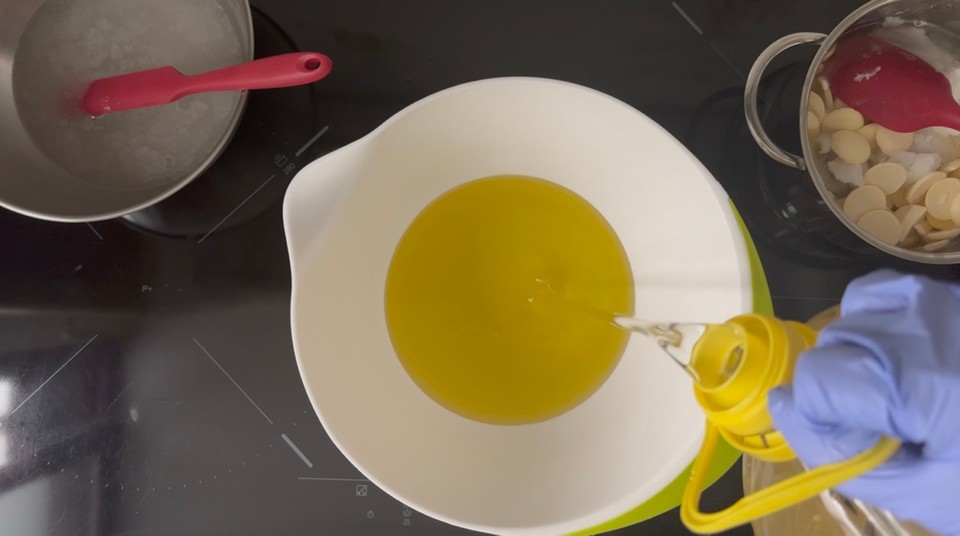
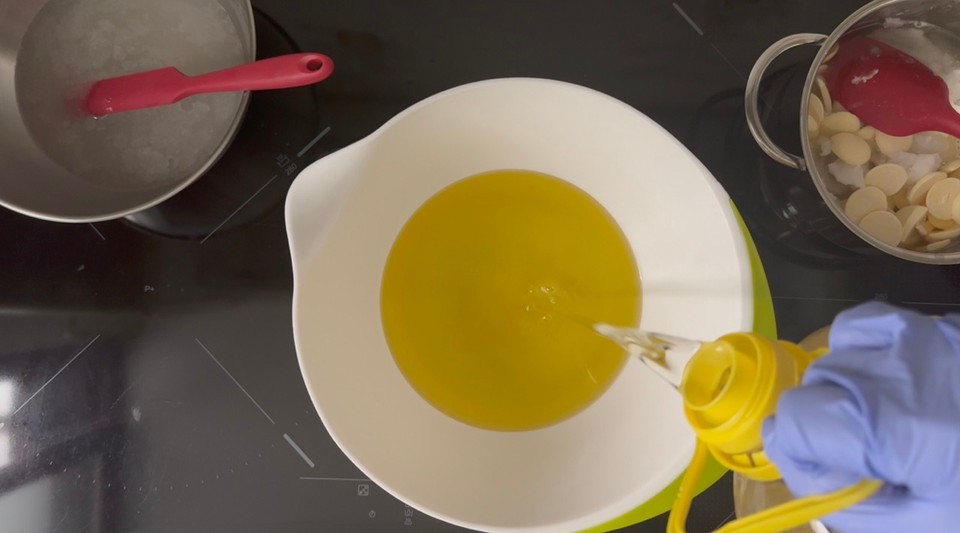
- Add the melted butters and oils to the liquid oils and mix to combine.
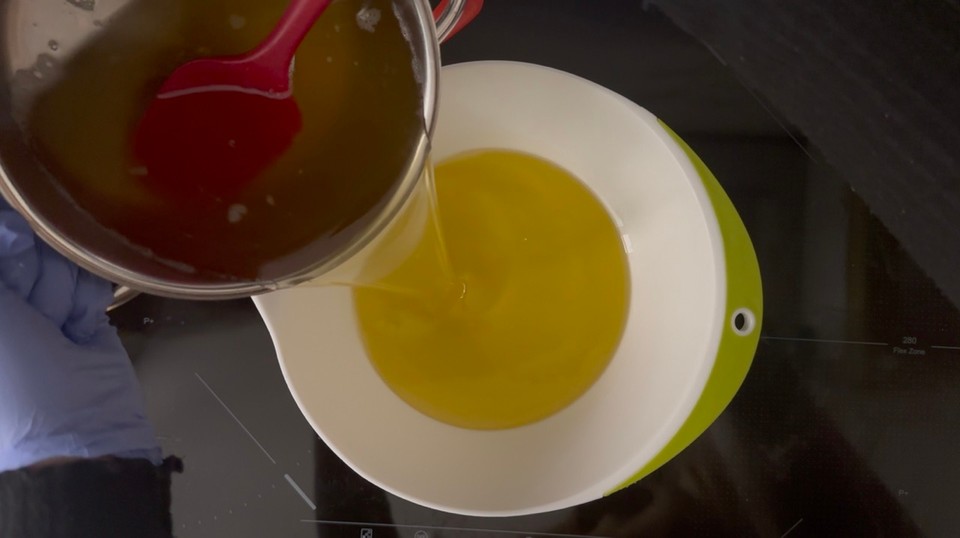
- Add the cornstarch to the oils and mix to combine.
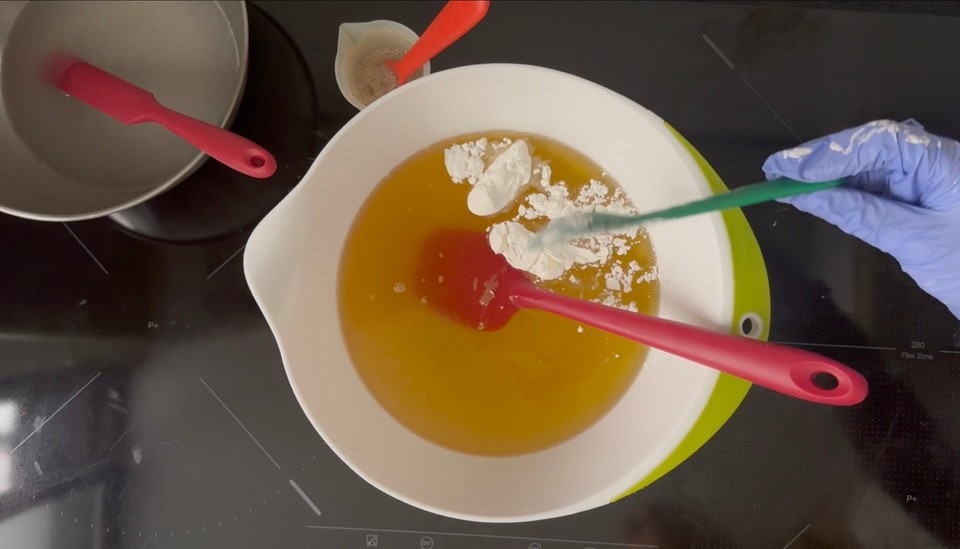
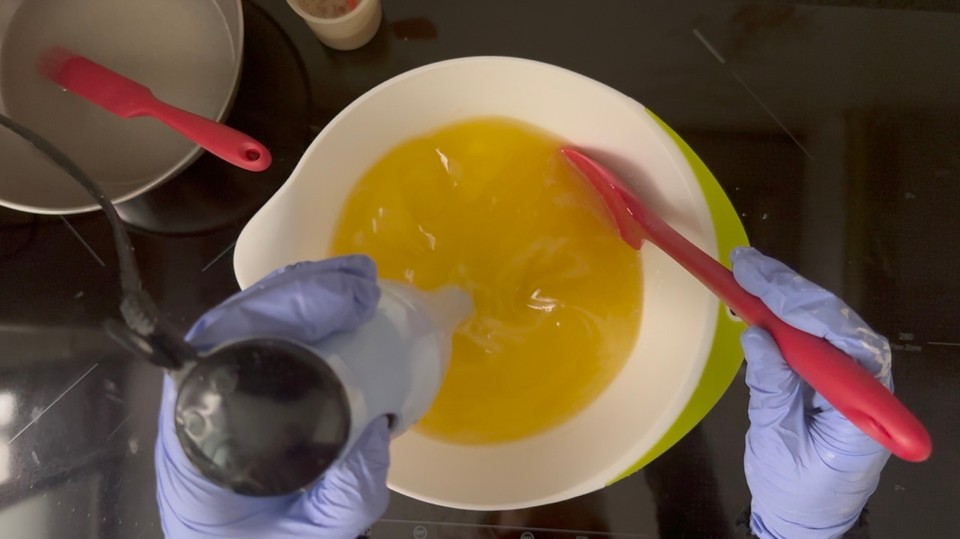
- Check the lye solution temperature and the oil's temperature. I recommend mixing the lye into the oils at a temperature of 35-45 degrees celsius (120 fahrenheit), the lye solution and the oils should be more or less at the same temperature.
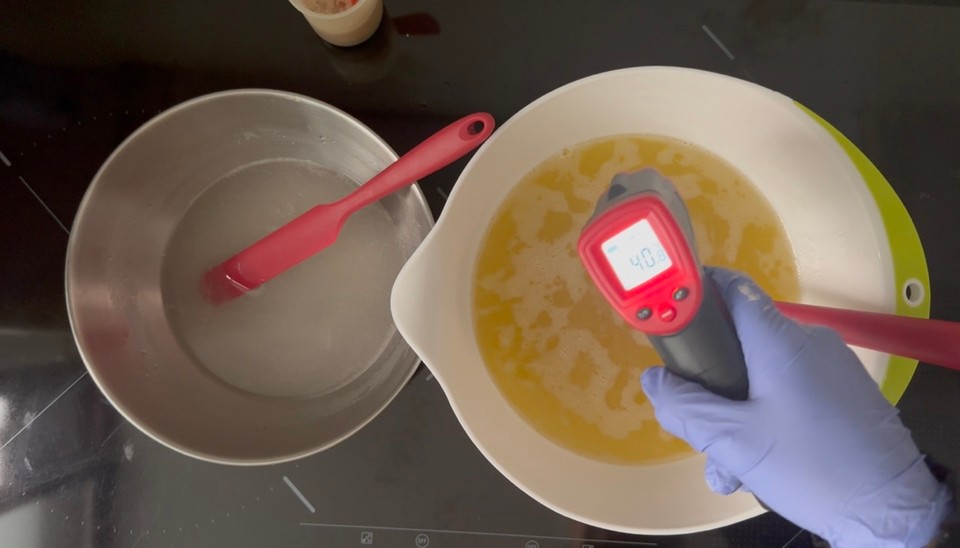

- Pour the lye solution into the oils. Stir the mixture to create an emulsion, use an immersion blender to reach a light trace.
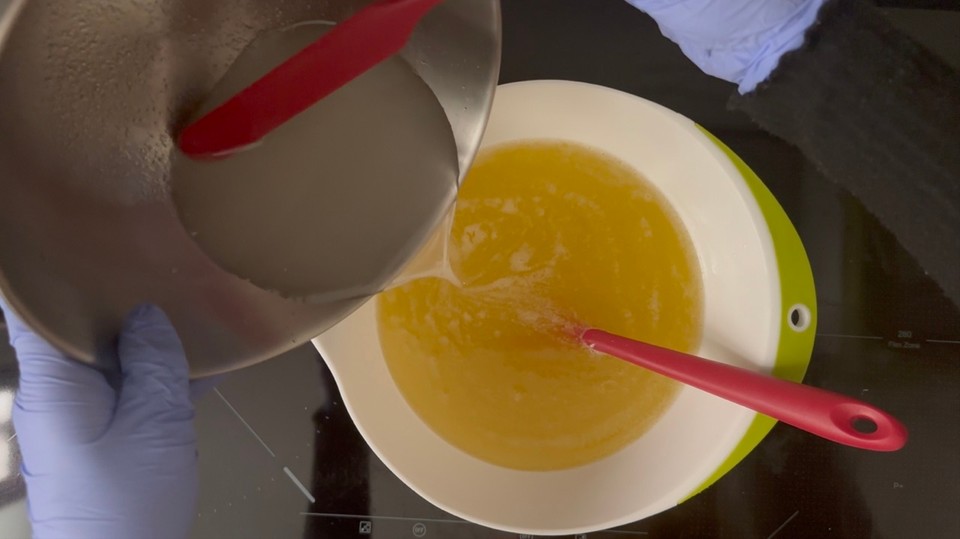

- Pour around ⅕ of the soap batter into a different container. Add the activated charcoal to the ⅕ soap batter and set aside.
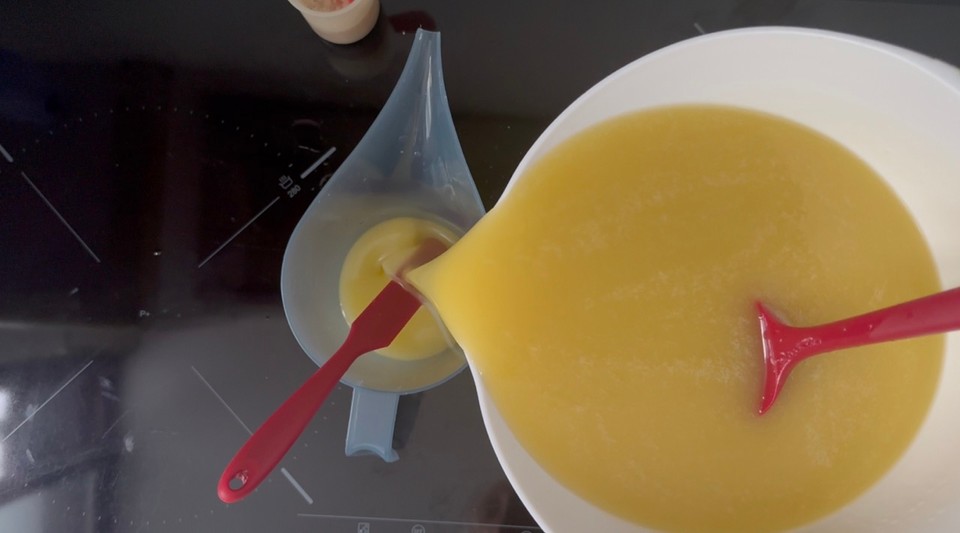
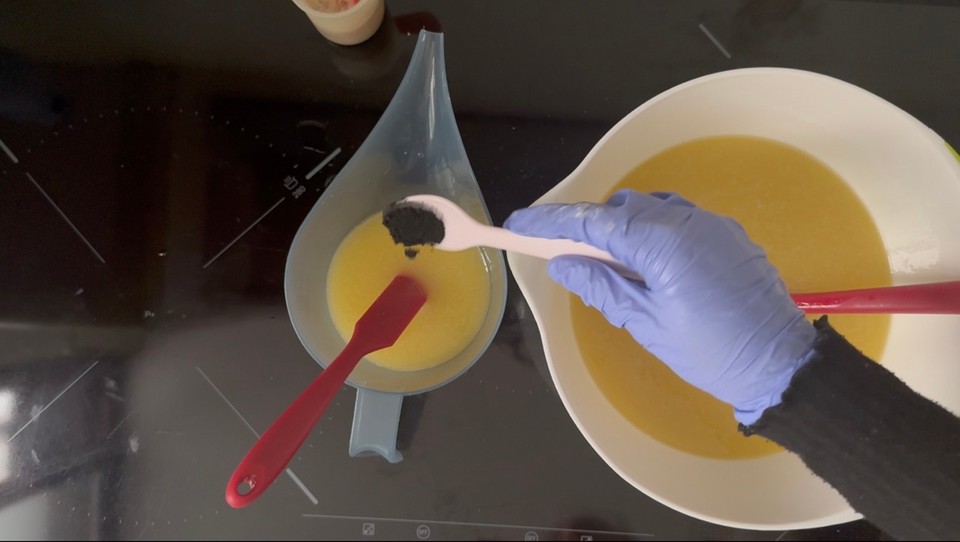
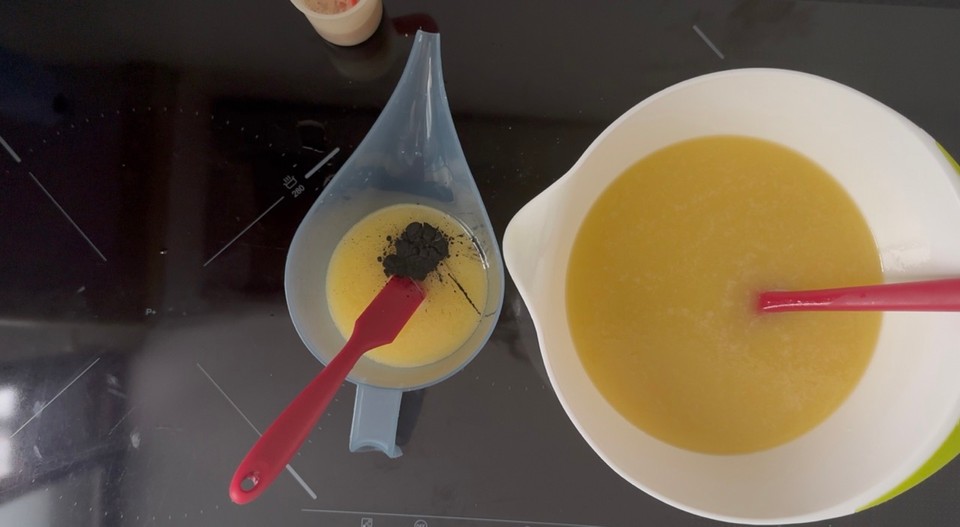
- Add the dead sea clay mixture to the big batch of the soap batter and mix to combine.
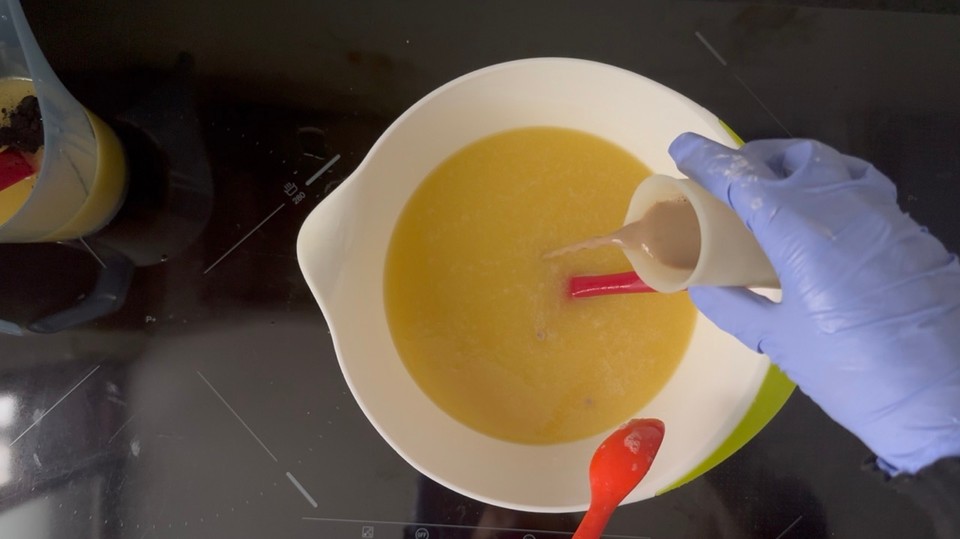
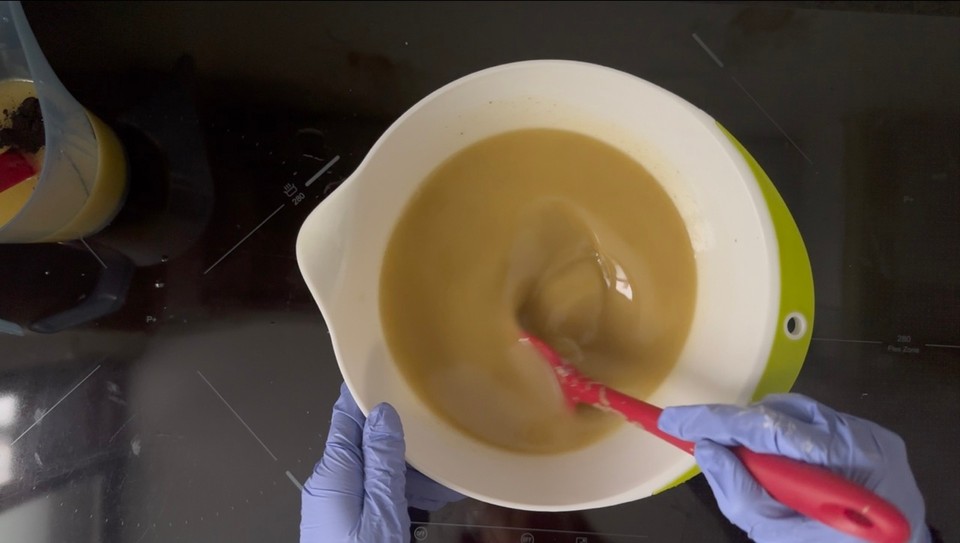
- Add the essential oils and mix to combine.

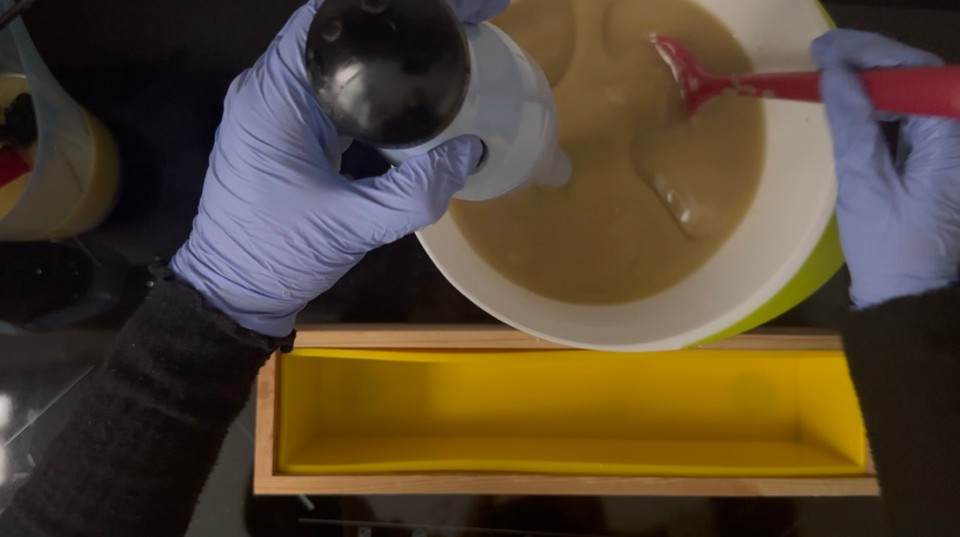
- Pour the bigger soap batter into the mold, tap to release air bubbles.
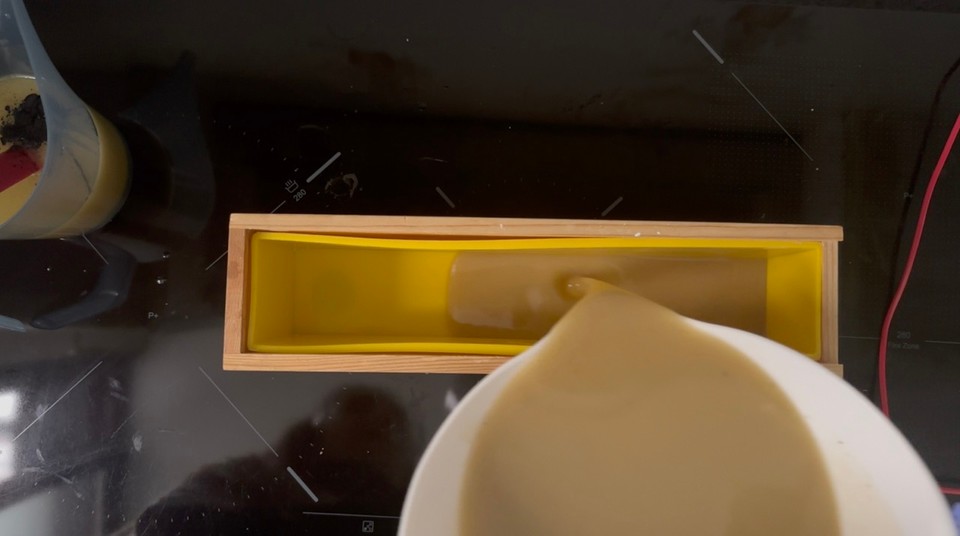
- Mix well the activated charcoal in the ⅕ soap batter and add the remaining amount of the essential oils blend, mix to combine.
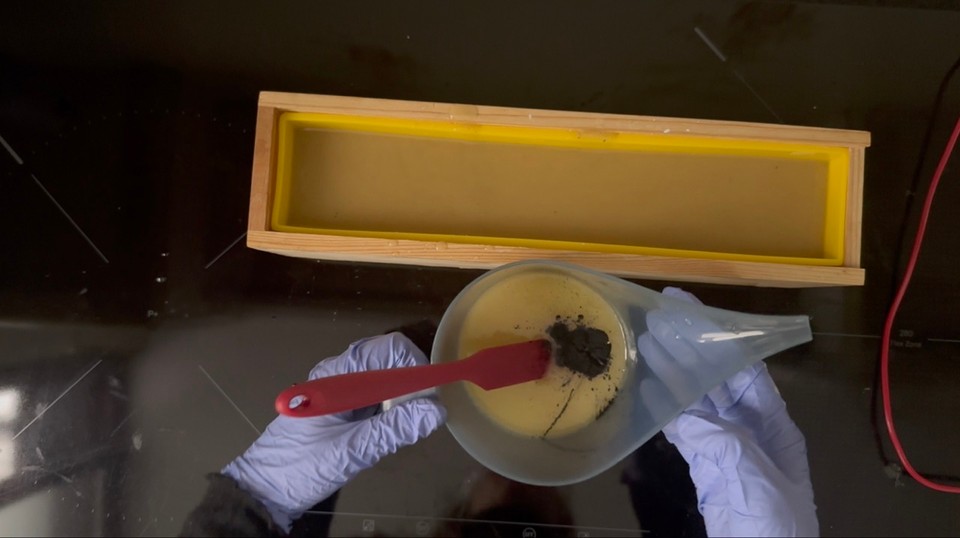
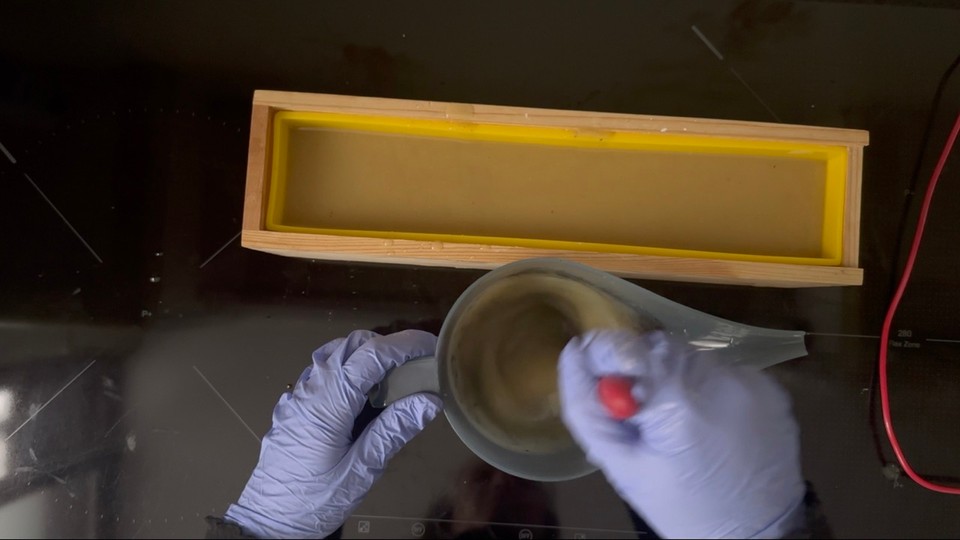
- Pour the batter with activated charcoal from a distance, pour into one side of the mold.
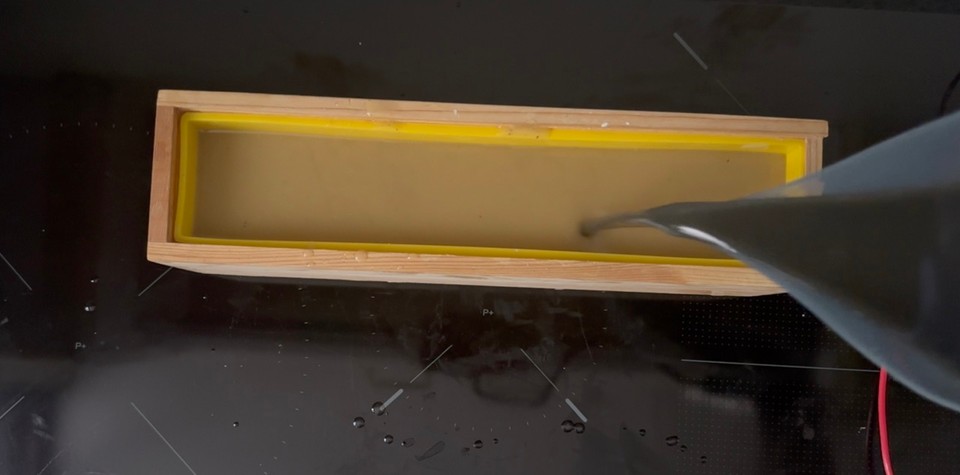
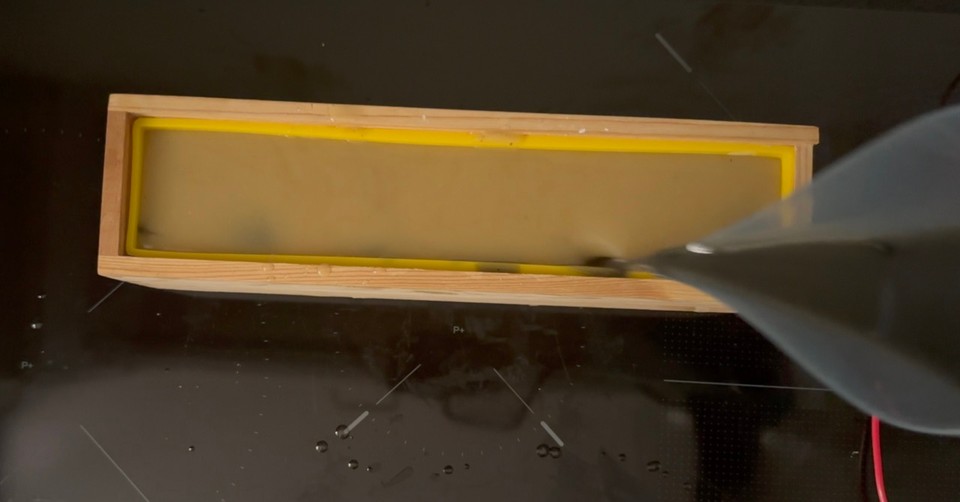
- Place the hangar down the mold, on the same side you pour the charcoal soap batter. The motion of the hanger would be from up to down to the button of the mold. Drag the hanger (while still on the bottom of the mold) to the other side of the mold and pull it up (from the other side). Place the hanger aside.
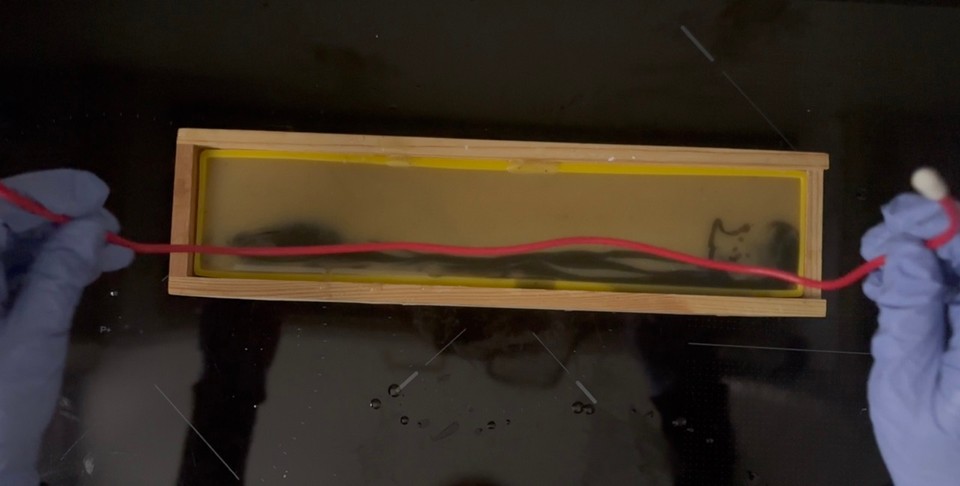
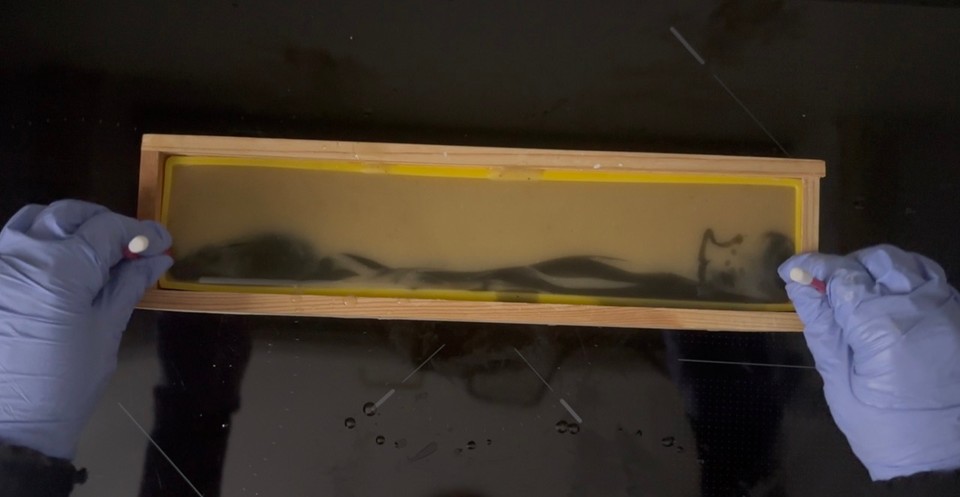
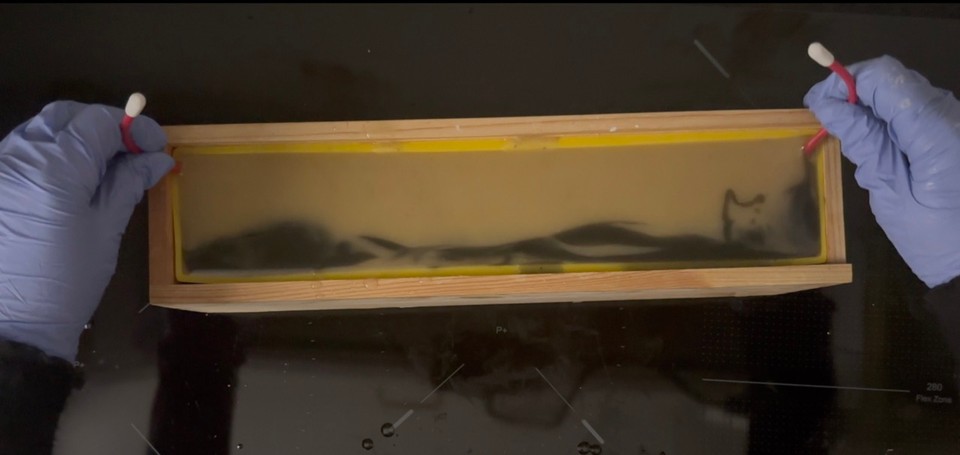
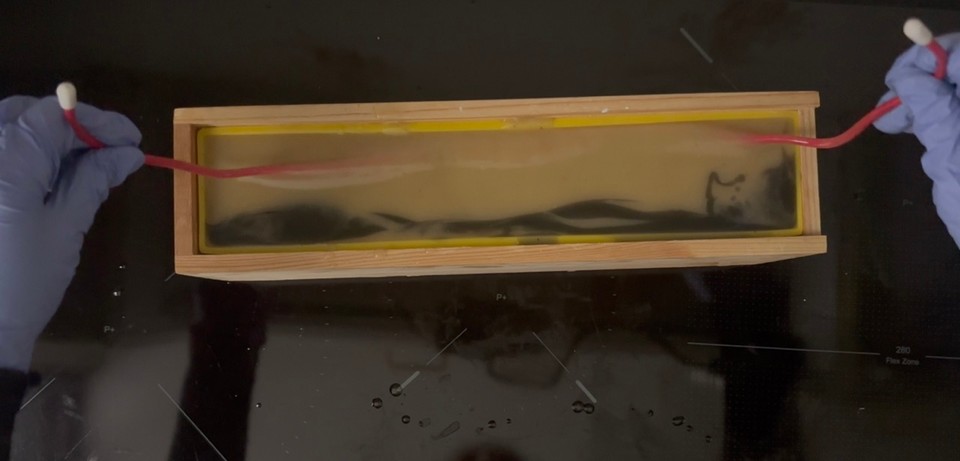
- If you want you can make a top swirl with a chopstick.
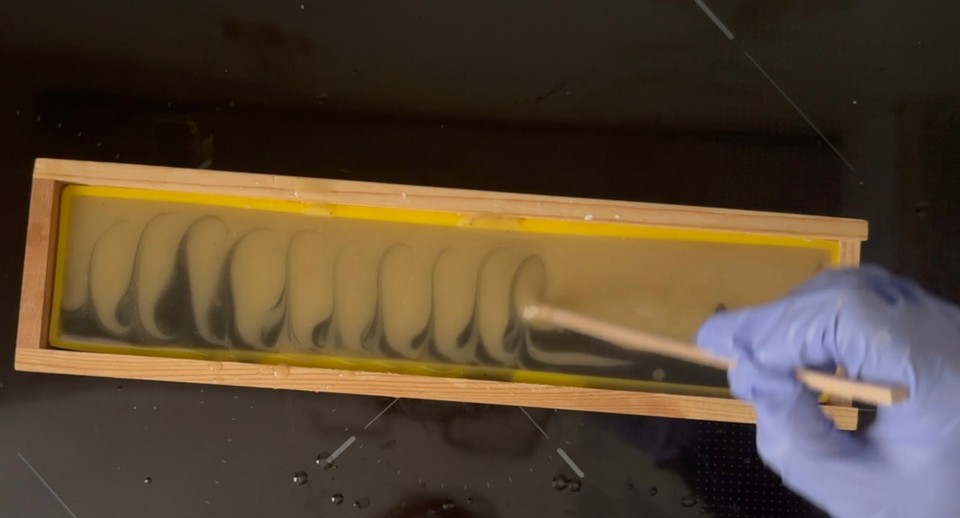
Let the soap solidify for 24-36 hours.
Unmold the soap and cut into bars. If you trim the edges of the bars, keep the soap scraps and make this soap design from soap scraps or the sugar scrub from soap scraps.
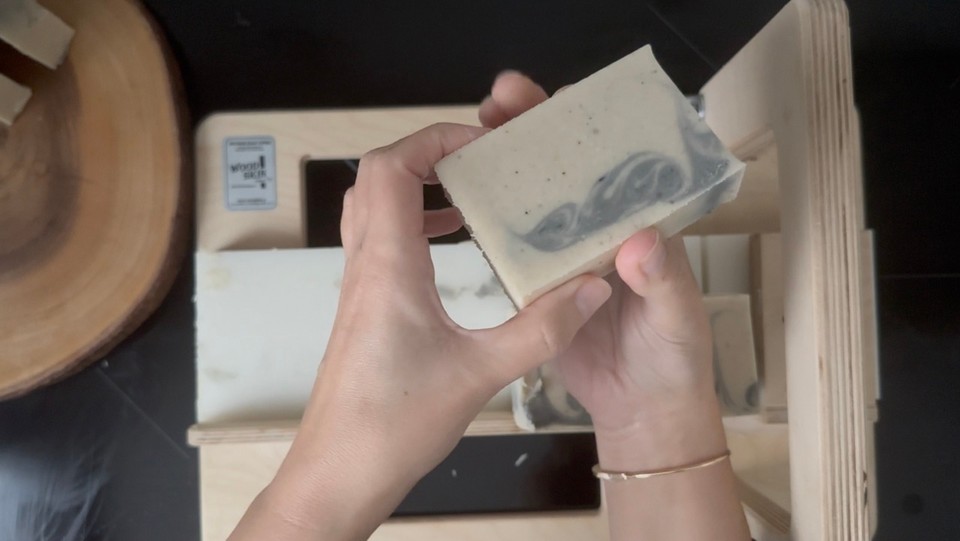

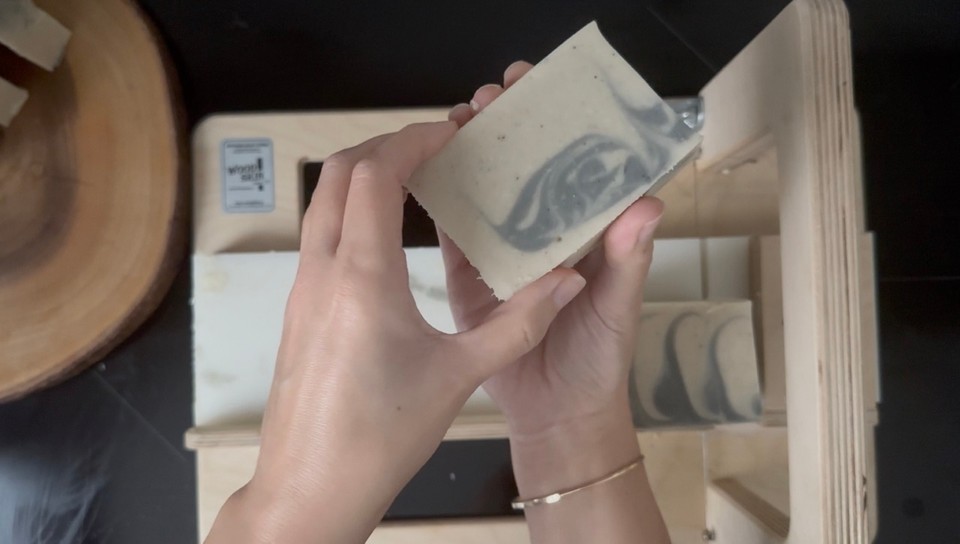
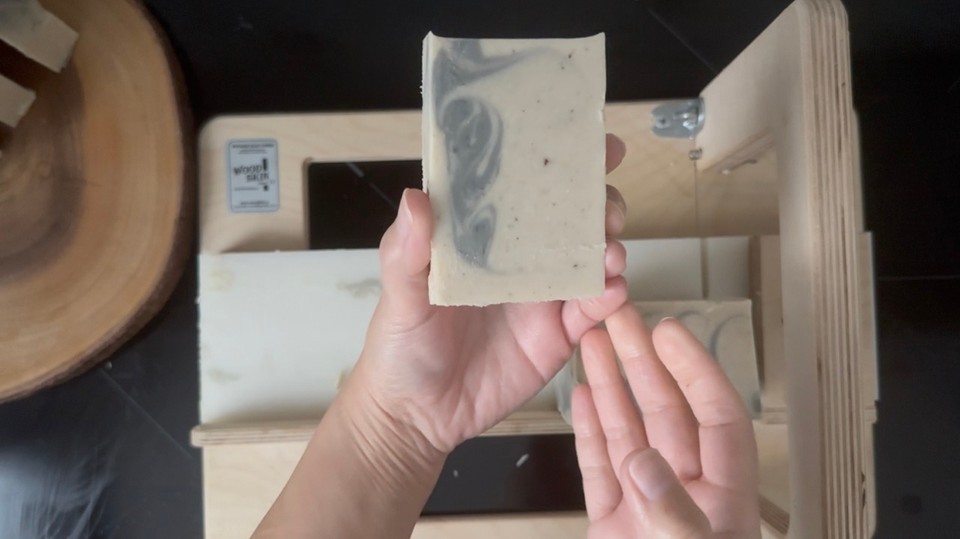
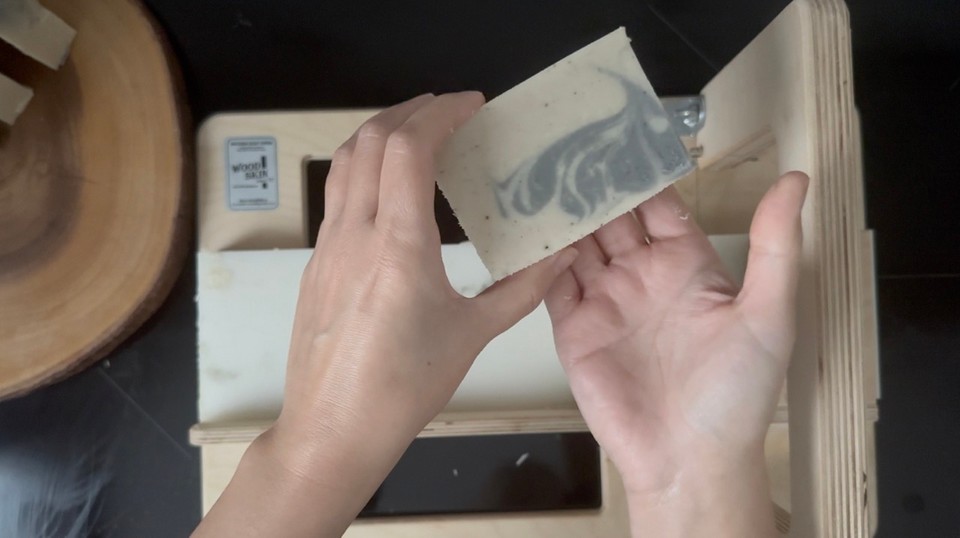

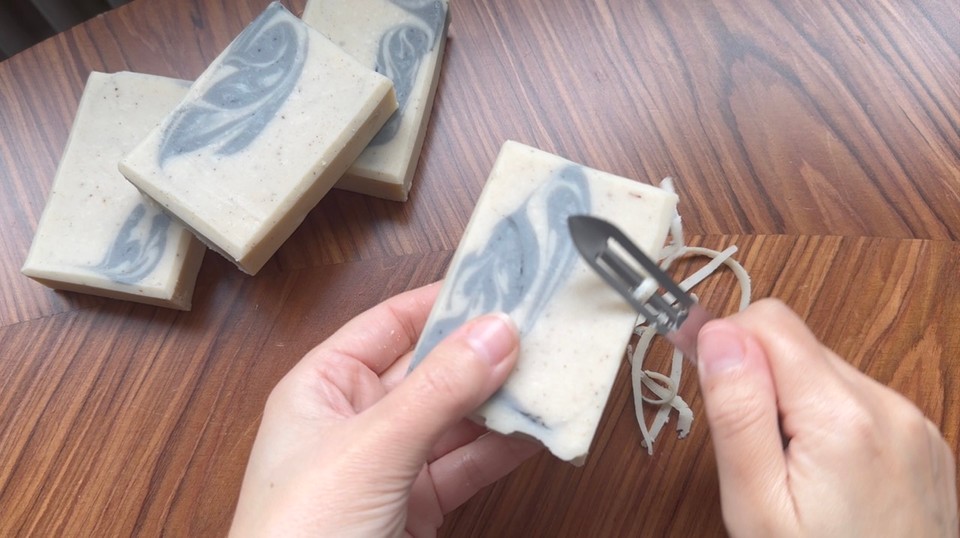

- Let the soap bars cure for 3-6 weeks before using them.
